CAPE FEAR (1962)
An ex-convict menaces the family of the man who put him in jail.
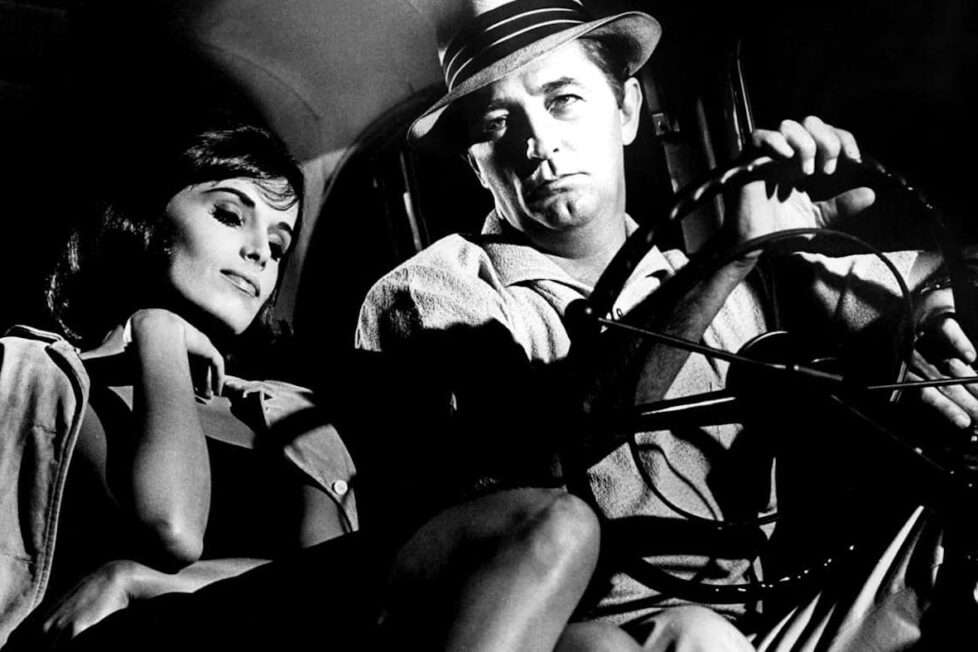
An ex-convict menaces the family of the man who put him in jail.


Max Cady, the terrifying figure of implacable vengeance played by Robert Mitchum in the original Cape Fear, is frequently compared to an animal. In one of the film’s most memorable shots, we see Cady approaching his girlfriend Diane (Barrie Chase) like a beast stalking his prey; he’s shot through ornate ironwork that recalls a fence, but it’s not going to protect her.
Indeed, Diane herself describes Max as an animal at one point, though from her it seems an expression of almost masochistic adoration: “It’s a great comfort for a girl to know she cannot possibly sink any lower”, she says of her short-lived relationship with Cady.
More typical of the way Cape Fear’s characters react to Cady, though, is the comment of Sam Bowden (Gregory Peck) that his nemesis belongs in a cage—and, at least superficially, the heart of the film’s moral dilemma lies in another comment made by Sievers (Telly Savalas), a private detective hired by Sam.
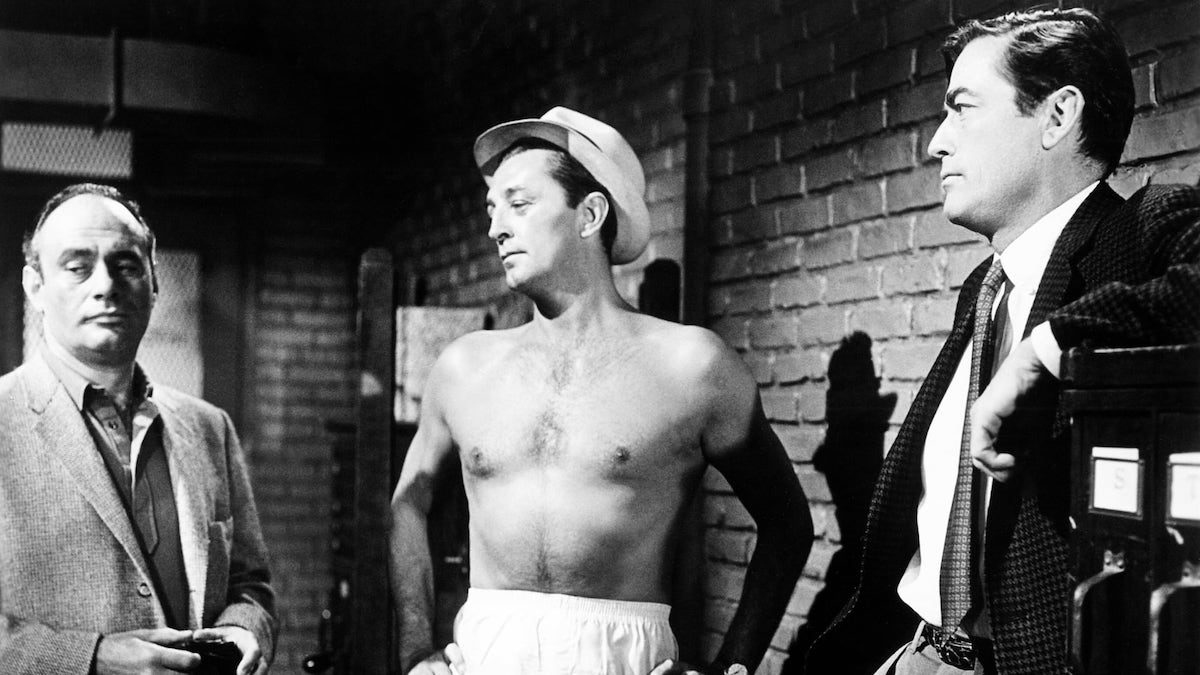
Sievers proposes getting Cody beaten up to deter him from harassing Sam’s family further: “A type like that is an animal, so you’ve got to fight him like an animal.” This suggestion the “good guys” might have to operate outside the law is relatively unusual for the Hollywood of the 1960s, but also creates a central conflict for Sam, an upright attorney.
His self-image as well as his public one, it seems, is built around upholding the law—“you can’t put a man in jail for what he might do”, he says at one point, extending the niceties of justice even to Cady—and yet as the menace that Cady poses to his family grows stronger and stronger, Sam is more and more tempted to cross that boundary and act pre-emptively even when his adversary has been careful to not obviously commit any crimes.
Cape Fear is, then, about as noir as they come in the way it forces an upstanding protagonist to test the boundaries of legality and his own morality, at first gently, later more strongly. To that extent, its subject is Peck’s Sam, but few would disagree the most memorable figure is Mitchum’s Cady; a sneering, smirking personification of coiled-up violence, made all the more sinister by his casually relaxed attitude, his cigars, and Panama hat.
We know he’s going to be a problem and know he’s not nearly as innocent as he pretends to be, from the courthouse scene at the beginning: Cady is clad in a suit that’s nearly white but tellingly not quite, and he’s slovenly in appearance and manner too, bumping into a woman without stopping to help her. After introducing its mesmerising villain with this brief sequence, Cape Fear soon dives straight into the conflict between Cady and Sam that drives the entire film.
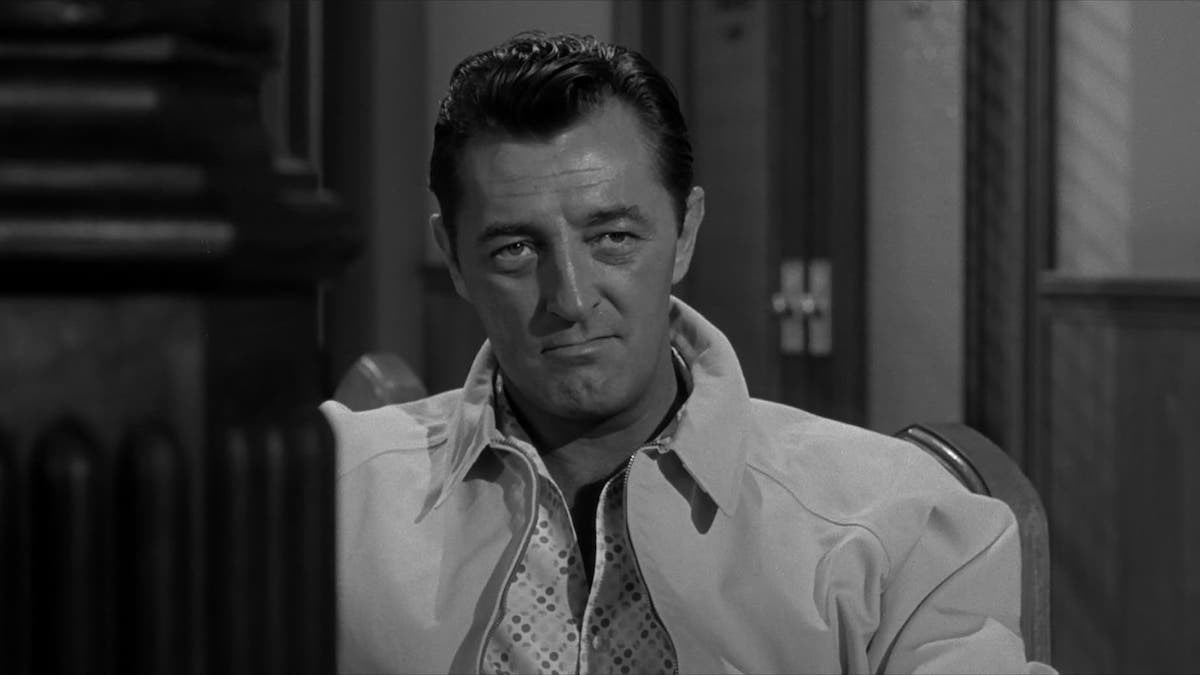
Cady, recently released from prison after nearly a decade of incarceration which he blames on Sam’s testimony at his trial, accosts Sam in his car, mentioning already the latter’s wife and daughter who (rather than Sam himself) will become his prime targets. He turns up at a bowling alley where the family are playing; he ogles Sam’s young daughter Nancy (Lori Martin) at a marina in a scene which is powerful for its unmistakable sexual connotations. (The word “rape” is carefully avoided in Cape Fear, but the implication is unmissable at three important points.)
Gradually Cady grows bolder in his forays against Sam’s family. Gradually Sam, too, grows desperate; the law in the form of the local police chief (Martin Balsam) can’t help him, since Cady’s technically done nothing they can prove. “Nobody can protect themselves against a man like that,” says Cady’s girlfriend Diane.
The plotting by screenwriter James R. Webb is watertight, faithful to its 1957 source novel—John D. MacDonald’s The Executioners—in broad outline but not detail, and never feeling like it’s just contriving excuses for the next incident. Each step follows plausibly from the preceding one, and only a little ambiguity about geography at the end lets the storytelling down slightly.
But while it’s certainly a strong and fast-moving enough narrative to hold one’s attention, it’s largely the photography, the music, and some of the performances that make Cape Fear more than just another workmanlike early-’60s noir.
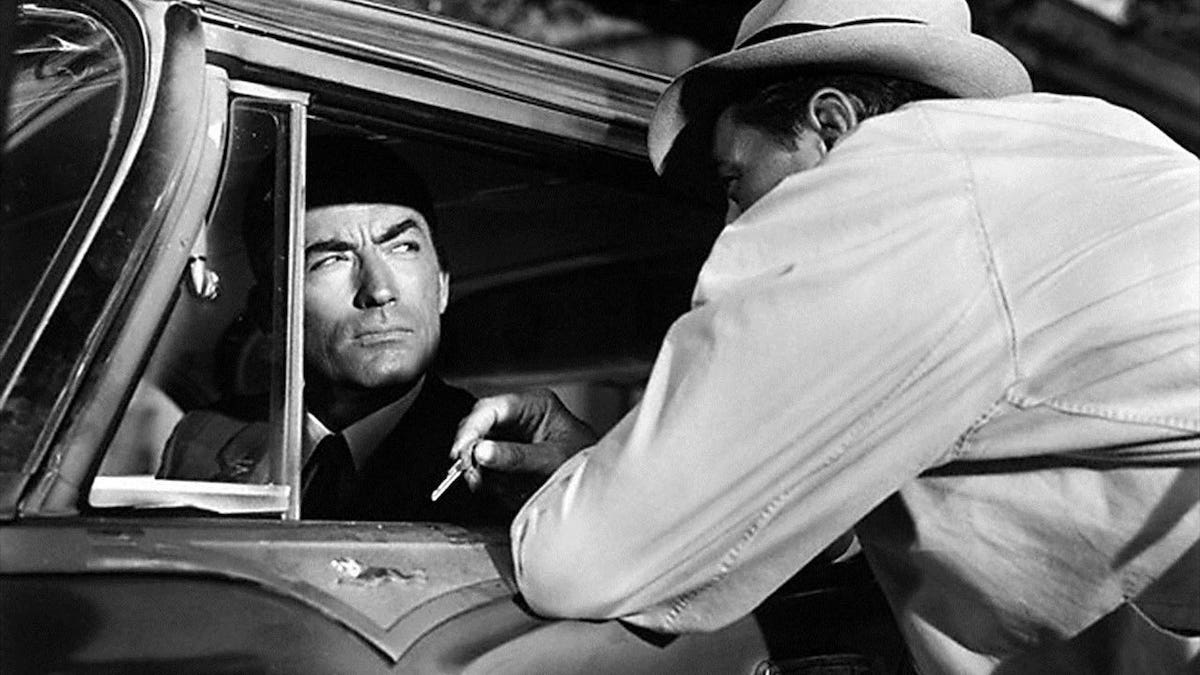
Cinematographer Sam Leavitt (with an Academy Award win and two nominations to his name from the preceding four years) and director J. Lee Thompson (The Guns of Navarone) exploit the contrast between the gloriously sunny Georgia weather and the ever-present sense of danger, before making the reduction to animalistic combat visually obvious in the murky swamps of the final scenes.
There’s some interestingly complex photography, too. For example, when the faces of Sam and his wife Peggy (Polly Bergen) are shown in noir half-darkness after they have arranged to have Cady beaten up, while the villain is fully lit. Is the implication here that Cady is at least more honest than his more respectable foes? And young Nancy gets one of the best scenes, also masterfully shot with some very effective misdirection, when she is seemingly pursued by Cady at her school. The child’s-level view reminds one of the famous raptor scenes in Jurassic Park (1993), so perhaps Cape Fear was an influence.
Bernard Herrmann contributes a very Hitchcockian score, evoking both Psycho (1960) and Vertigo (1958), to a film that has more than a touch of Hitchcock about it. Contrasting with jollier diegetic music (from a radio or a bar, for example) it’s based on short, often descending motifs; the repeated four-note phrase opening the film sets the ominous tone perfectly. Around 31 minutes in you can briefly hear the shark theme from Jaws (1975), though that’s probably no more than a coincidence.
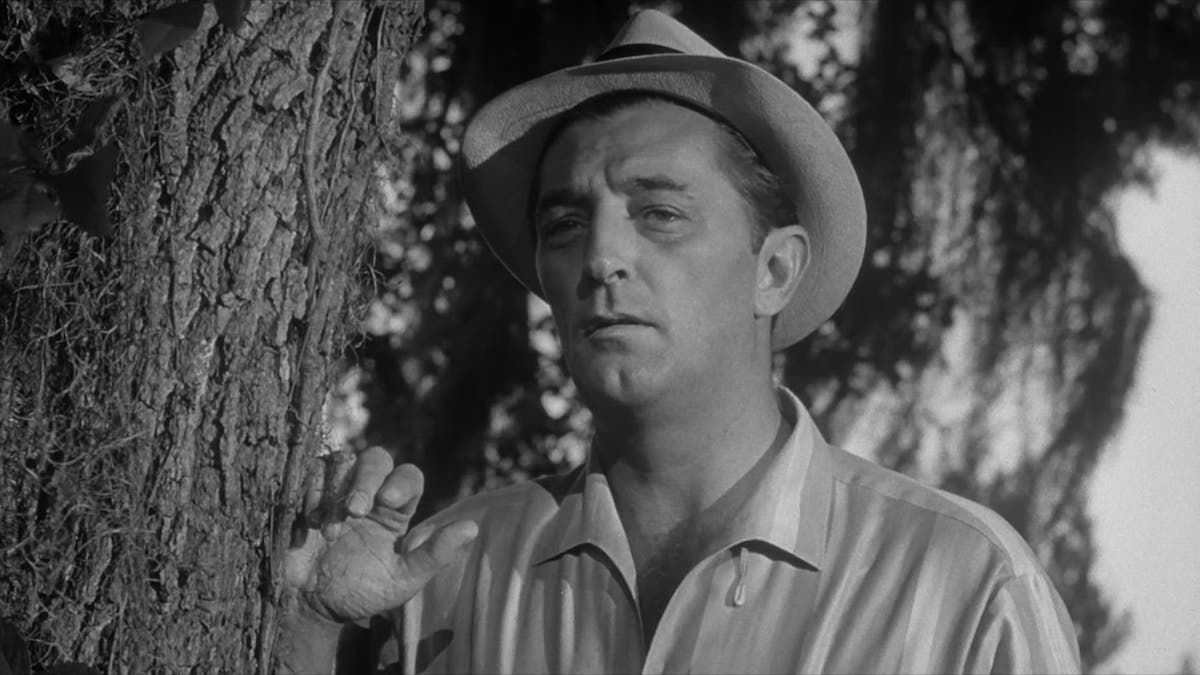
Mitchum is, of course, the stand-out from the cast in a role easily compared to his Harry Powell in Charles Laughton’s Night of the Hunter (1955). His Cady isn’t subtle, but nor is he so excessive he risks becoming ridiculous; we always have a sense that while Cady certainly is evil, he’s not mindless and not impossible to best.
It’s often forgotten that at least part of Cady’s resentment against Sam derives from the loss of his own family when he was sent to jail. Somewhere, deep down, a human lurks, and it may be this that Chase’s Diane falls for (despite her claimed appreciation of his animal side). Though her part is relatively small, she’s perhaps the movie’s other truly fascinating character, and Chase creates her convincingly. In other secondary roles, Balsam is as watchable as always, as is Savalas—still with hair more than a decade before television’s Kojak, though it’s receding.
Peck is perhaps too saintly to be true, as he sometimes could be. Still, a few jokey moments with his daughter reveal a more everyday side, and in any case the film (which he was instrumental in bringing to the screen) needs a seemingly unsullied man to be brought lower by Cady.
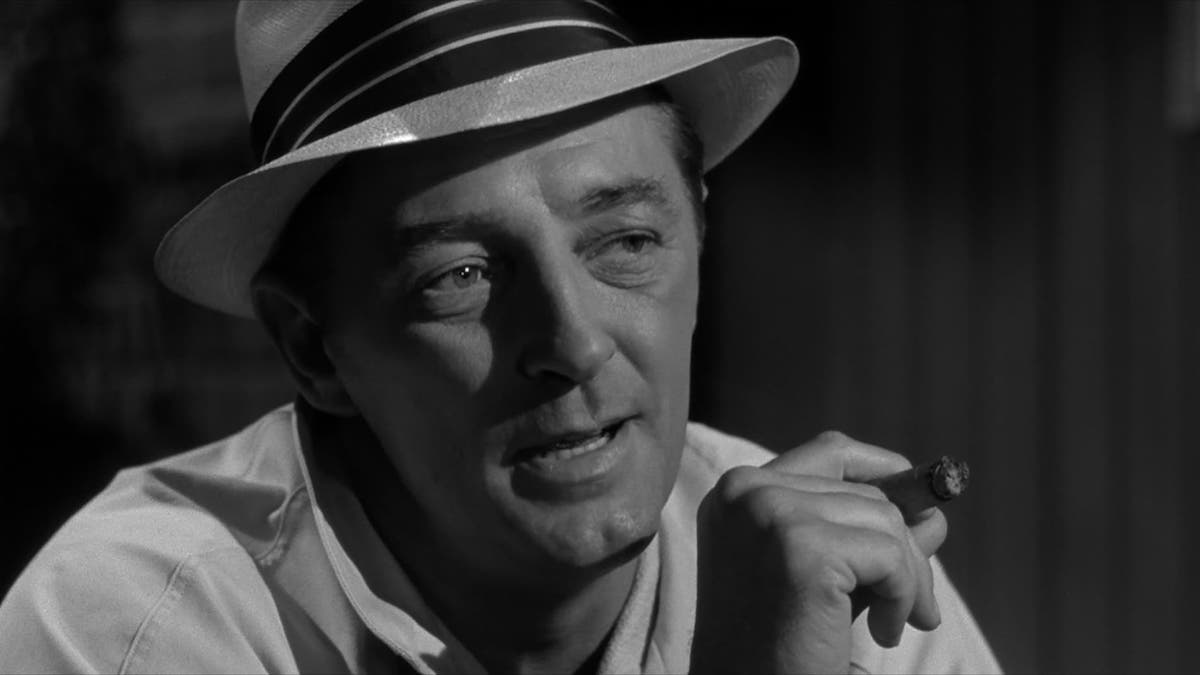
Cape Fear received generally positive reviews in 1962 and there was also a warm reception for Martin Scorsese’s 1991 remake, this time with Robert De Niro’s Cady facing down Nick Nolte’s Sam (and with Mitchum, Peck, and Balsam reappearing in smaller roles).
The later assessment of the ’62 film by David Thomson as “trash honestly made” encapsulates the contemporary response well enough, but while the original Cape Fear is not a profound film or trying to be one, perhaps it has a bit more heft to it than most trash. Into this lurid tale of a good man driven to violence by a bad one, occasionally some more subversive ideas sneak in, perhaps most vividly at the end.
Here, Cady finally enters a room on a houseboat where Sam’s wife Peggy is hiding from him. He is shirtless; there is the air of a lover arriving for an assignation. They gaze into each other’s eyes. He takes her into his arms.
Nominally this is another assault, the climactic one of a movie where Cady has been relentlessly assaulting the family, first psychologically and then physically. But as in all the best noir, it feels like it could be something else, just enough to make us wonder… Cady may be an animal, but is he the only one?
USA | 1962 | 106 MINUTES | 1.85:1 | BLACK & WHITE | ENGLISH

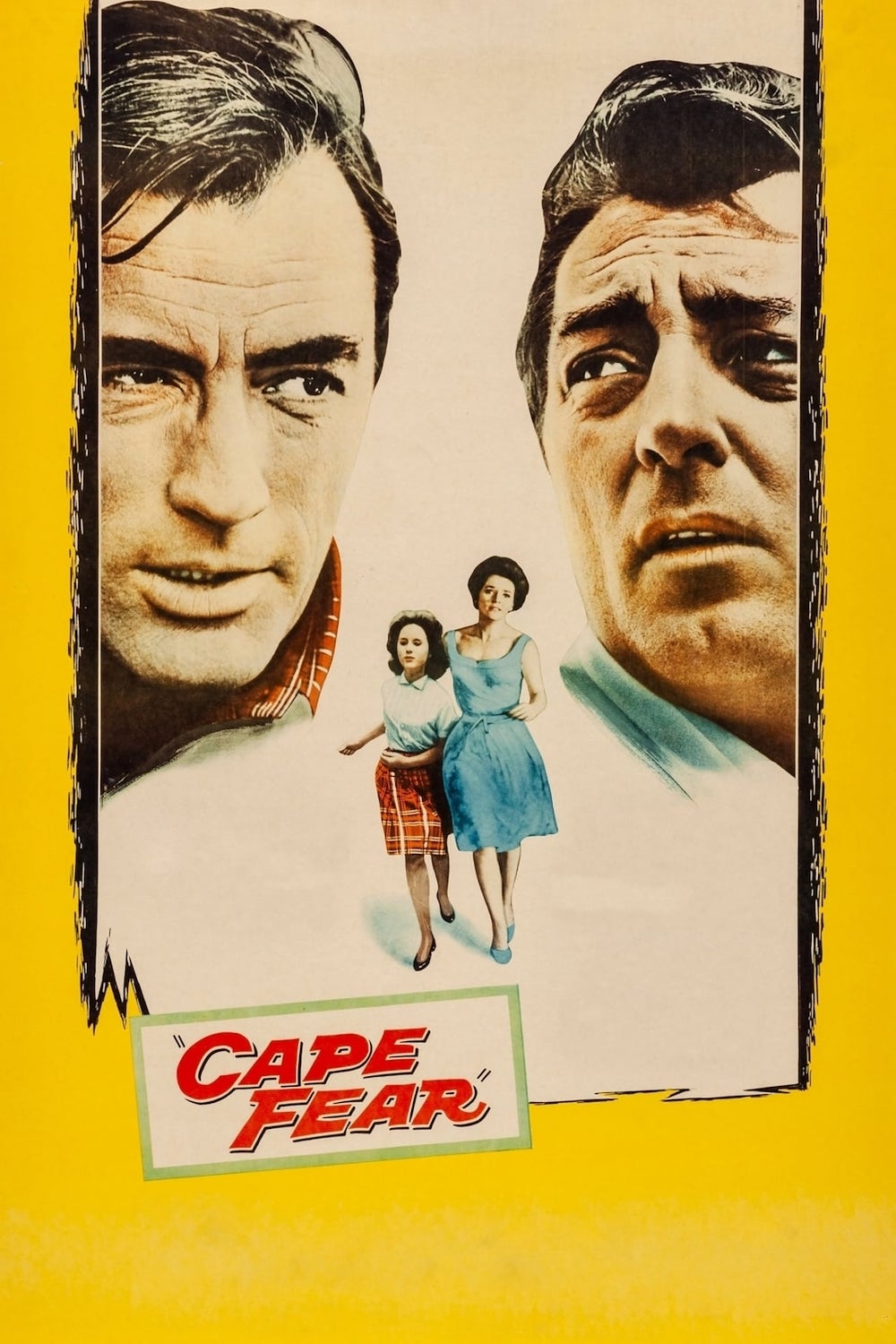
director: J. Lee Thompson.
writers: James R. Webb (based on the novel ‘The Executioners’ by John D. MacDonald).
starring: Gregory Peck, Robert Mitchum, Polly Bergen, Lori Martin, Martin Balsam & Telly Savalas.
